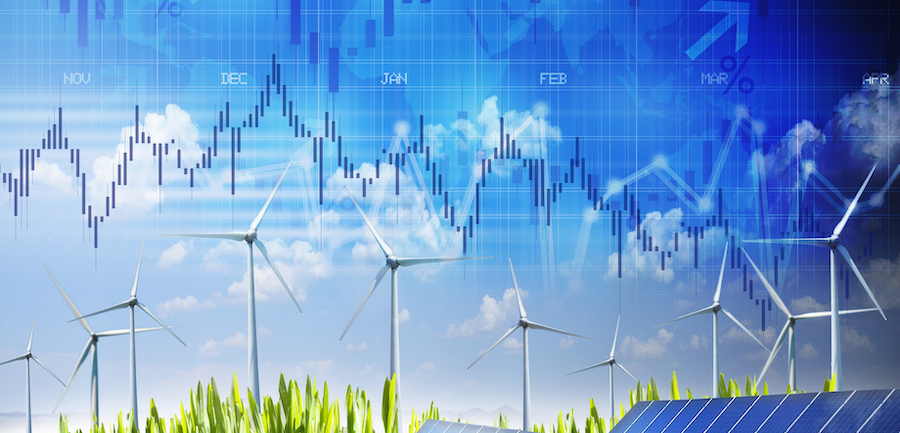
The world’s biggest energy companies are abandoning oil rigs in favour of wind farms and solar panels.
The energy industry is seeing an increase in investment activity going into 2021 after a challenging 2020. However, many traditional energy giants are putting their money into projects you wouldn’t necessarily expect them to. This month, news emerged of BP paying an astronomical amount for the rights to build two large-scale wind farms in the Irish Sea. Companies like BP don’t invest large sums without expecting to see an equally large return.
What are the reasons behind this investment and others like it? Why are companies swapping oil rigs for solar panels in 2021? What does this mean for the future of the energy industry?
Increasing investment
BP’s £900 million per year deal to develop wind farms in the Irish Sea is a landmark due to the sheer size of the sums involved. The price for development rights is 15 times higher than that of similar deals made in previous years. Industry critics claim the price BP paid is too high and that it will struggle to see a return. However, companies like BP are rarely wrong on their investments – and they are far from the only energy giants pursuing this strategy.
Shell has recently teamed up with the Dutch renewable specialists Eneco to construct wind farms near the coast of the Netherlands. In contrast, Total has acquired solar power and battery manufacturers as part of their renewable strategy.
Returns on investment
The primary reason these giant energy companies are now making serious investments in renewables is that they believe the returns are there.
In the Irish Sea deal mentioned in the section above, BP expects to see a return of 8% to 10%. For this project, the real estate cost is high, but the cost to construct and maintain the turbines is relatively low, as the designated waters are quite shallow. BP will also be able to pool resources between the two new wind farms to keep costs down.
Meanwhile, companies that invest in solar energy have seen costs decrease significantly in recent years, making it much easier to generate strong returns. A study by the International Renewable Energy Agency (IRENA) found that during the 2010s decade, the cost of solar photovoltaics went down by a stunning 82% globally.
This cost decrease means that it is now cheaper to generate power using solar energy than coal or gas. You could replace a 500GW coal-powered plant with solar or wind power and save £18.6 billion per year. All you need is access to land somewhere sunny (like Australia) or windy (like the Irish Sea).
Net zero
Governments around the world have set targets for achieving net zero carbon emissions in their countries. The UK has set one of the most ambitious deadlines for eliminating carbon emissions, aiming to be at net zero level by 2050.
Energy companies that rely on selling fossil fuel-generated power are on notice. If they still want to sell products in 30 years, they need to go renewable. The best time to start investing is now.
The oil-based energy giants are setting their own targets to hit net zero. BP, Shell and Total are all matching the UK’s 2050 pledge. Publishing these targets is excellent PR, but they have to back up their words with actions.
More funding needed
Professional investors are seeing better returns for renewable energy investments compared to fossil fuels in all major financial markets. Between 2015 and 2020, investments in UK green energy initiatives generated returns of 75%, compared to an abysmal 9% for fossil fuels.
Investment from asset managers and institutional investors is flooding into the renewable energy industry, meaning pioneering companies can fund new projects. However, there is much more still to be done, especially if targets like those laid down in the Paris Agreement are to be met. IRENA estimates that countries need to double their current annual investment in renewables from $310 billion to more than $660 billion in order to achieve climate change targets.
Renewable energy investment is a relatively young space, but it is growing fast.
The future is bright
Technology in the renewable energy space is progressing at lightning speed, which will lead to major shifts in the industry.
One example that is gaining traction fast is virtual power plants (VPP). VPPs are small renewable power generators dotted around various locations, linked remotely to a central control system that operates distribution. These generators could be as small as a solar panel on your roof, for example.
VPPs are exciting because they can be used to maximise efficiency, ramping up and slowing down in response to demand. They also democratise energy generation. In the future, they could supersede the power stations we know today.
In the UK, Tesla and Octopus Energy have recently partnered up to start a VPP between electric car drivers. Participants will install solar panels and store power in batteries on-site, which will be controlled by the remote system, redistributing power when necessary.
As the price of equipment such as solar panels and storage batteries is decreasing all the time, expect to see more initiatives like this.
What’s next?
With exciting developments like VPPs on the horizon, as well as significant possible returns on investment, it’s no surprise that the traditional big players in the energy industry are getting involved in renewables. The question is, are their pockets deep enough?
Stay in touch for more updates.
